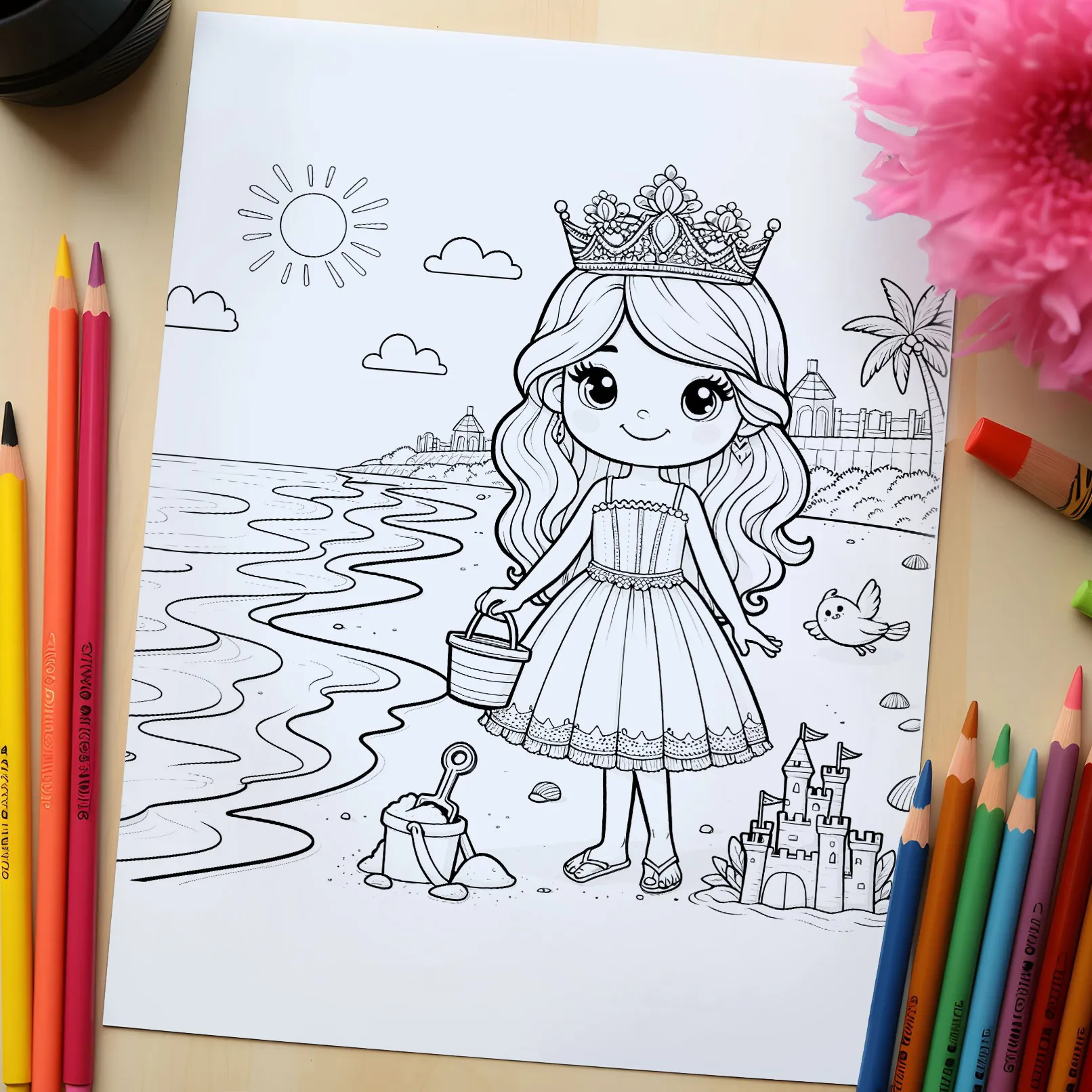Painting plays an important role in developing children's creativity and imagination. Every brushstroke, pencil shade or felt-tip pen sketch can bring fairytale images to life. They give young artists the opportunity to express their feelings and fantasies freely. And they help parents to recognize their children's talents and abilities from the earliest stages of development. And to be honest, children are better occupied with them than with a tablet watching children's movies or playing online games.
But why are princess coloring pages so popular? The answer lies in the magic of colors. They decorate a picture and also influence the emotions of the viewer. They stimulate the urge for creativity and self-expression. Every color chosen transports the child into a fairy tale. The choice of colors reveals the inner world of children and helps them develop their talents and learn new practical skills. In this article, we will explore how princess coloring pages can be a magical tool for our children's development. And how they can help parents spend time with their children in a fun and meaningful way.
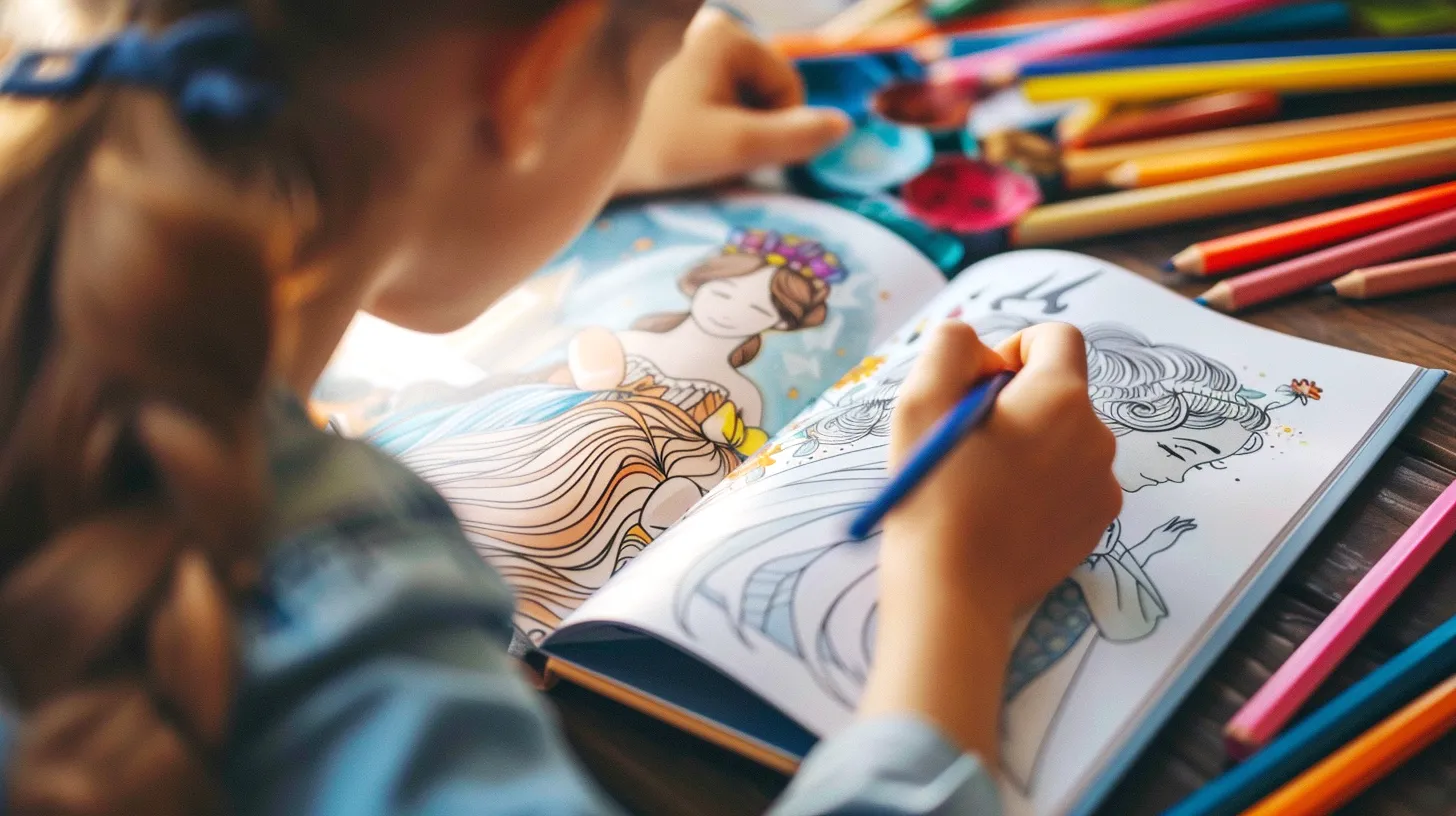
Table of contents
The role of coloring in the development of children's creativity
Scientists have long proven that coloring pictures plays an important role in children's development. It influences various aspects of self-expression and maturation. Drawing helps children improve their basic skills, control muscle movements and improve their fine motor skills, which is important for later success in school and other areas of life.
- A 2012 study published in "Psychology of Aesthetics, Creativity, and the Arts" examined the effects of drawing on the fine motor skills of preschool-aged children. The results suggested that regular drawing and coloring can help improve fine motor skills and hand-eye coordination in children.
- Researchers at the University of Wisconsin-Madison found in a study that drawing and coloring in children not only promotes fine motor skills, but also strengthens their creativity and problem-solving skills. The study was published in the journal "Psychological Science".
- A meta-analysis from 2014, published in the journal "Art Therapy", examined a large number of studies on the effects of art lessons on children's cognitive development. The authors concluded that drawing and painting can have positive effects on children's cognitive development, self-regulation and social skills.
When drawing, children discover a world of imagination in which there are no limits. Experimenting with colors, shapes and compositions stimulates the imagination and encourages creative thinking. In addition, drawing helps to enrich the child's emotional sphere. When painting, children can easily express their feelings, especially through the choice of colors and the way they are applied to the picture. Children usually prefer colors that correspond to their current mood and feelings. This helps them to recognize and understand them.
Parents can also benefit from this process. Not only is it a time to create and bond together, but it is also an opportunity to strengthen the relationship and emotional bond.
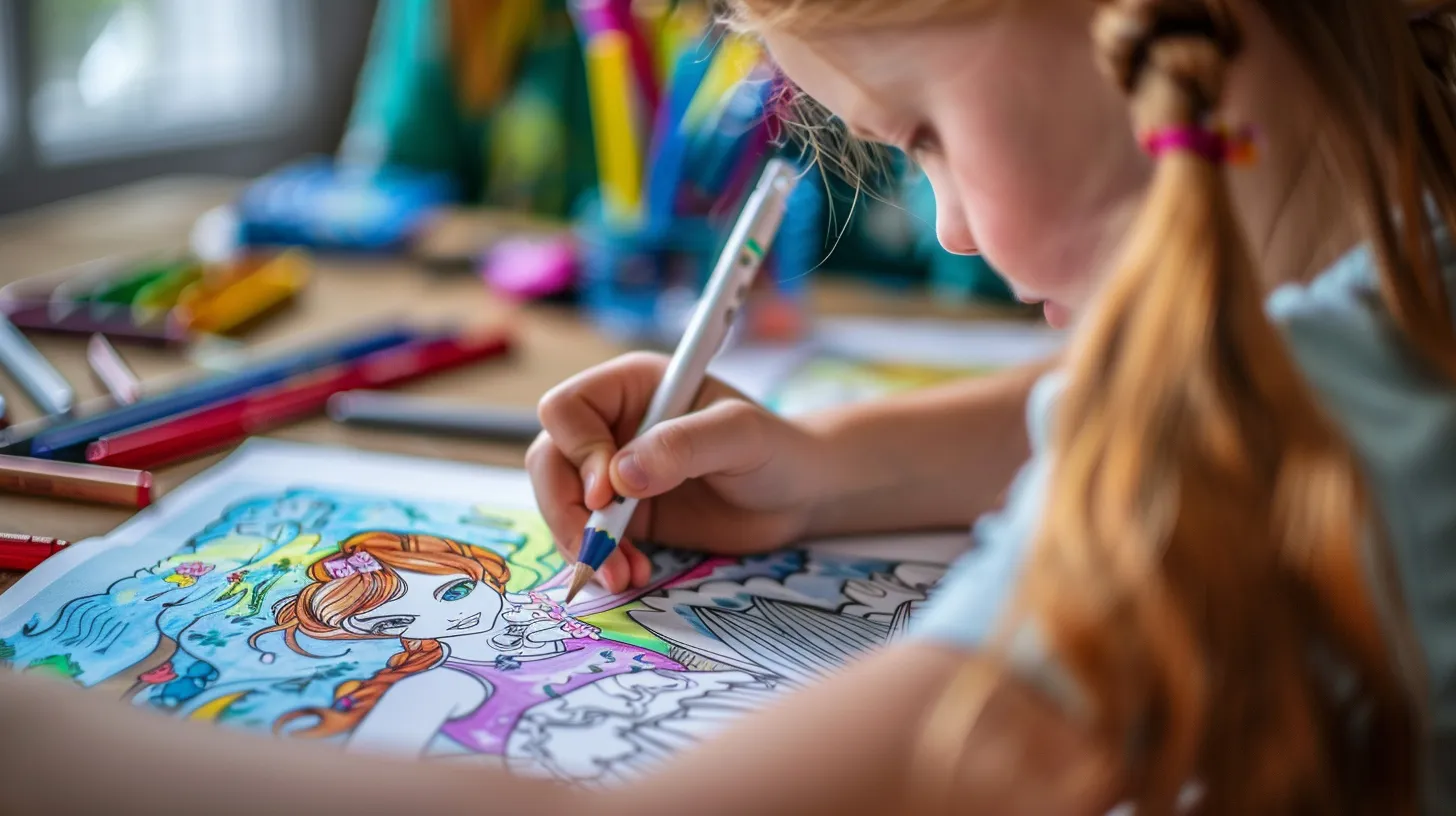
Princess coloring pictures as a tool for development
If you look at the topic in a broader and more practical context, you will notice that coloring pictures with princesses are often full of different motifs and images that reflect fairytale worlds and fantasy moments. Typical motifs are:
- Princesses in ball gowns
- Princesses defeating evil wizards and witches
- Princesses who live in fairytale castles
- Princesses who amaze with graceful dances or magical powers
- Princesses riding on scooters or bicycles and even on mythical creatures such as unicorns
The use of such images has numerous advantages, as they serve as unobtrusive stimulus material that guarantees good development. They allow you to:
- Increases children's motivation to engage in independent activities and improves various skills.
- Stimulates fantasy and imagination, as children can freely interpret and transform the pictures.
- Provides children with the opportunity to express their emotions and feelings by choosing colors and creating their own vision of beauty in the pictures.
- Develops children's ability to focus on tasks and persevere for long periods of time in the creative process.
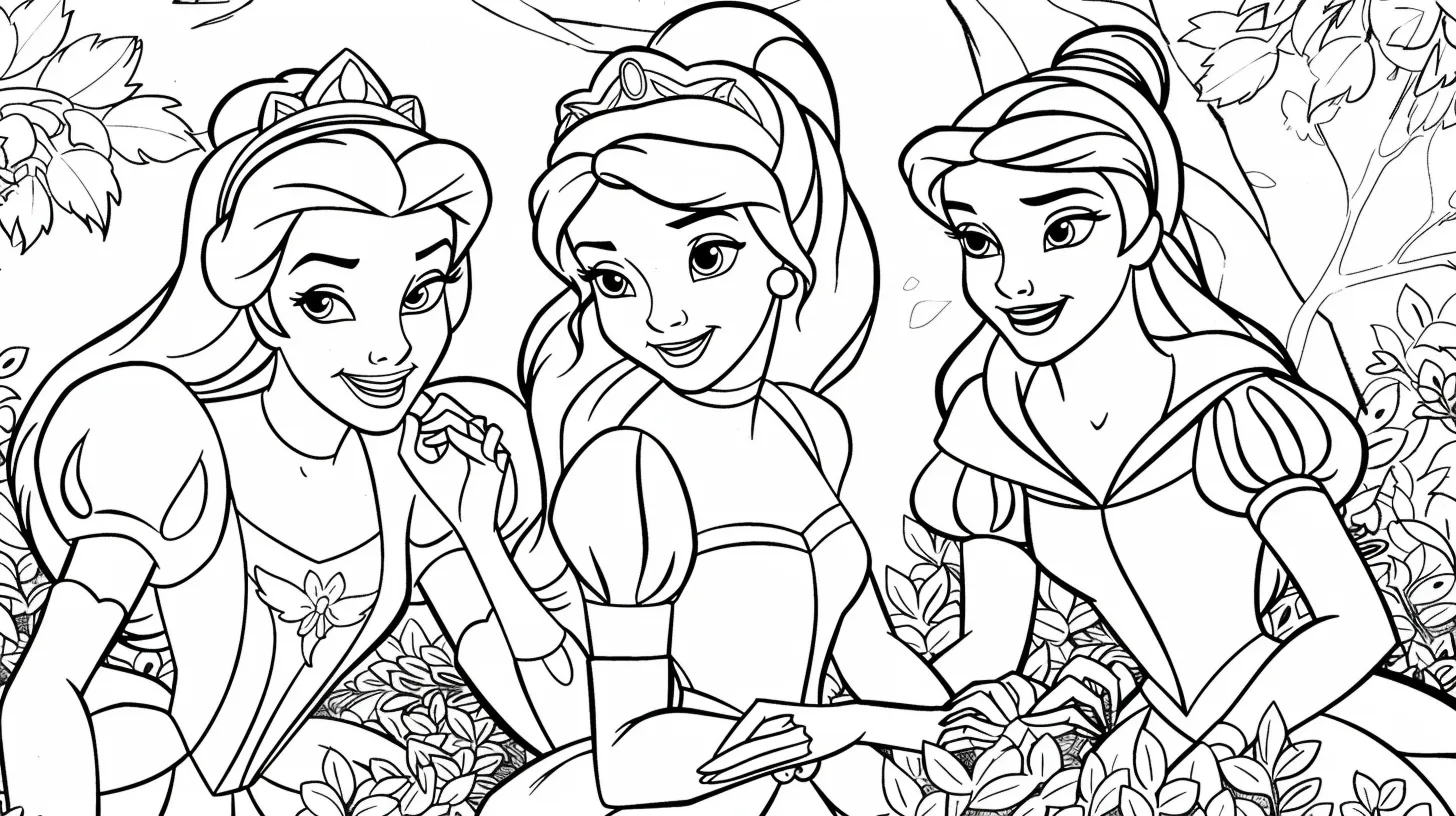
How can you use princess coloring pictures to encourage creativity?
Coloring pictures, including princess pictures, can be an additional and reliable tool for children's development. Here are some practical tips for parents and teachers:
- Let the children choose. Let them choose a picture themselves or paint it together. This arouses interest and motivation.
- Provide free access to a variety of materials and tools such as paints, pencils, felt-tip pens, crayons, etc. This allows the children to experiment with different techniques and develop their own unique approaches.
- Encourage the children to be creative and open to new ideas. Praise them for their ingenuity and originality in choosing and using colors.
- Don't forget to praise and positively evaluate the results. Regardless of how good they are, it is always important to show a positive attitude and emphasize the uniqueness of each child's creation.
- Use drawing to encourage concentration and perseverance. Encourage children to work on a picture for a long time so that they learn to finish something and achieve their goals.
The psychological effect of colors when painting princesses
Colors are very important to children in their creative activities, including coloring. The following describes the emotional associations that different colors can evoke and how they relate to the child's psychological state:
- Red: Energetic, cheerful, bold. Can evoke a feeling of strength and enthusiasm.
- Pink: Gentle, soft, calm. Often associated with love, warmth and tenderness.
- Blue: Calm, reassuring, intelligent. Can convey a feeling of security and stability.
- Green: Fresh, natural, calm. Associated with peace, harmony and growth.
- Violet: Mysterious, dreamy, fairytale-like. Can evoke a sense of magic and mystery.
- Yellow: Sunny, cheerful, optimistic. Often associated with joy.
- Orange: Warm, energetic, optimistic. Can evoke feelings of joy and activity.
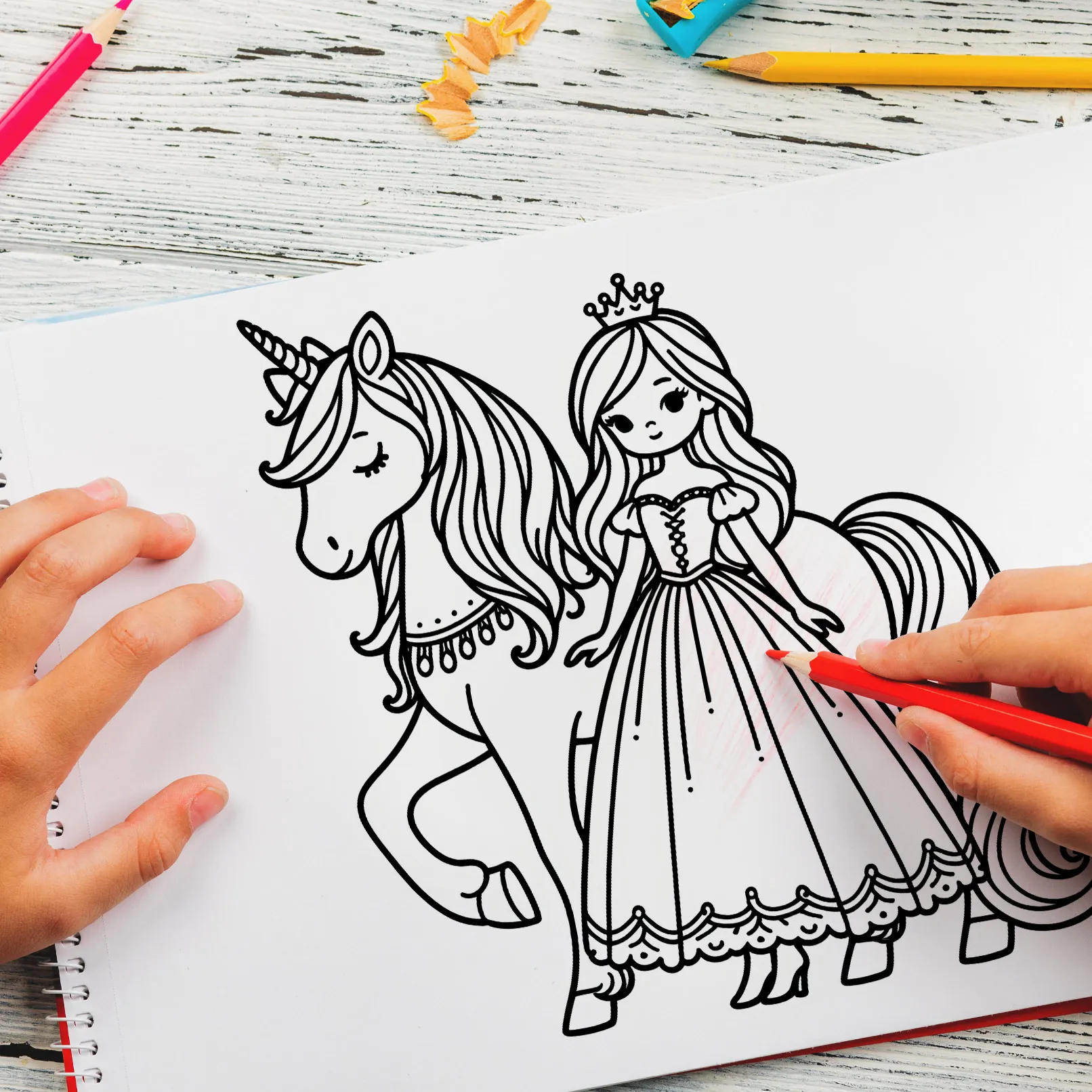
The connection between colors and a child's psychological state is that the choice of colors when coloring can reflect the child's emotional state and needs. For example, if a child chooses the color red, it may be a sign that they want to express their energy and liveliness. Blue can indicate a desire to calm down or feel safe. It is important to pay attention to the child's choice of color as it expresses their feelings and needs.
Coloring pages with princesses on TutKit.com
On TutKit.com you will always find about two hundred interesting pictures of princesses to download for coloring. They have been created in JPG format and optimized for A4 format so that they can also be printed out on a home printer. This makes them as accessible as possible for your little ones. Interesting motifs and thoughtful details in our pictures allow children to fully develop their creativity. And the possibility of multiple uses guarantees unique masterpieces every time as they improve their skills.
Don't hesitate, download the princess coloring pages and enjoy the time with your child.
